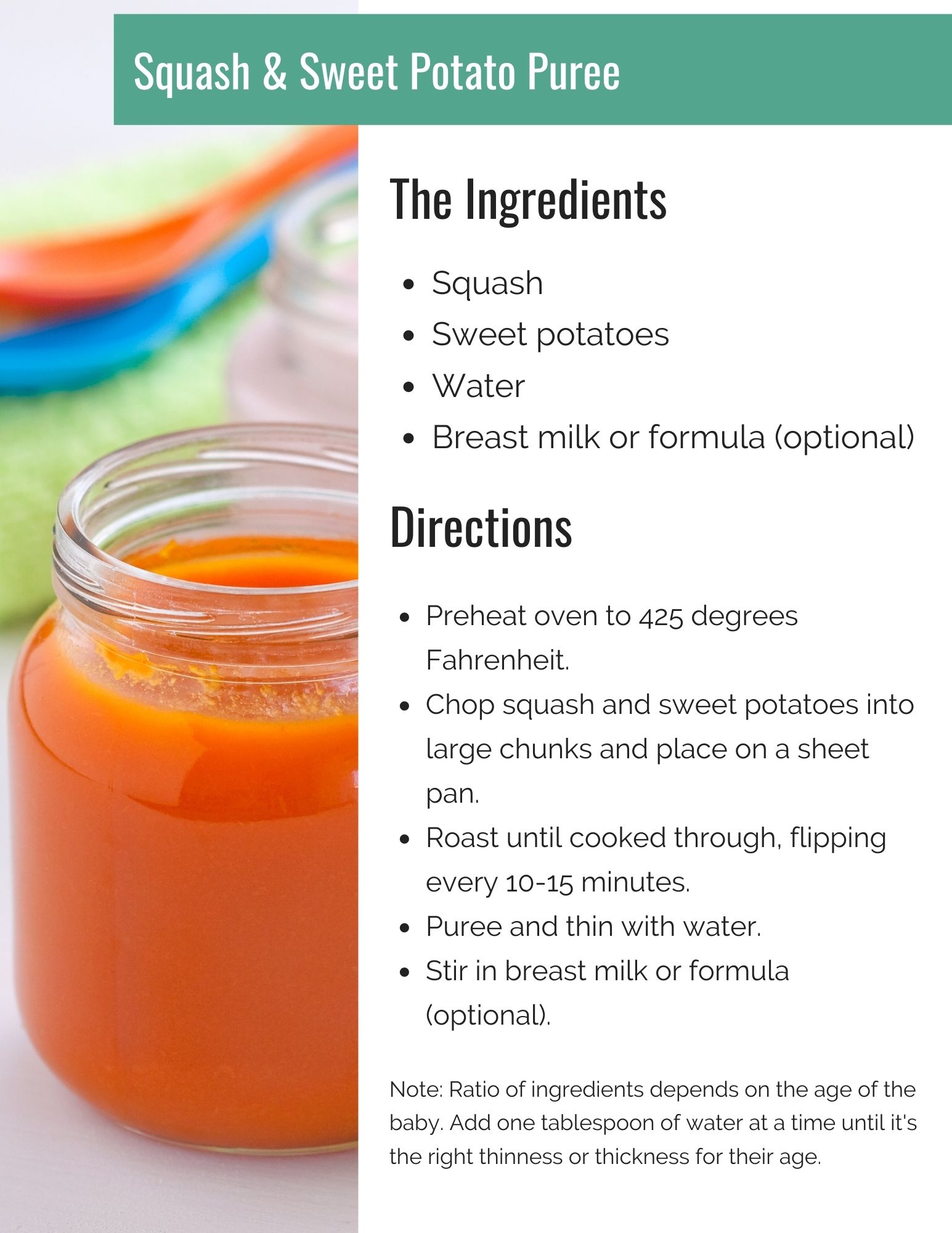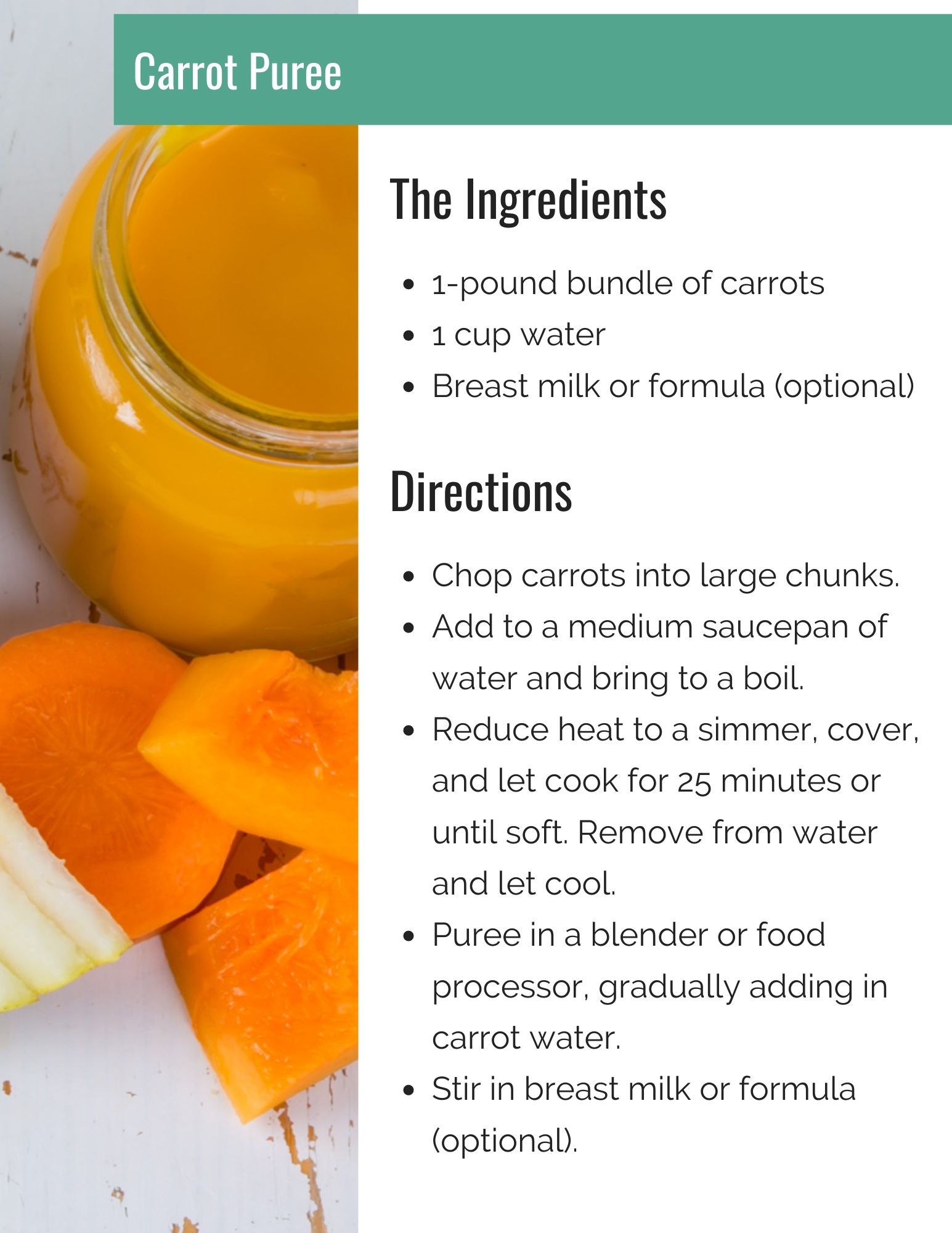Homemade Baby Food Recipes
Posted in

Your baby will be ready to try solid foods for the first time between 4 and 6 months of age. It's an exciting step in your baby's life, but it can also be overwhelming for new parents. Always consult your pediatrician about how and when to introduce foods into your baby's diet.
You may be wondering whether store-bought or homemade baby food is best. We've outlined the benefits of each, and we provided tips for making your baby food at home so you can make educated decisions that are best for your family.
Benefits of homemade baby food
The most significant benefit to store-bought baby food is that it's more convenient than making it yourself. Having a newborn is exhausting, and for many new parents adding homemade baby food into the routine feels unattainable. There is no shame in buying baby food if you don't have time. Most reputable baby food brands use minimal additives, but it's smart to check the ingredients before purchasing.
There are two significant benefits of making homemade baby food: It's more affordable, and you can use the best ingredients for your baby without added preservatives, salt, sugar or allergens. While making baby food from scratch can feel intimidating, with the right tools, prep schedule, and recipes, it might take less time and effort than you would think.
Tips for making baby food at home
Before you decide to make your own baby food, there are a few simple tips to help you save time and ensure your baby is getting the right foods for their age and development.
Consult your pediatrician — Before introducing solid foods to your baby, it's essential to consult your pediatrician. You should always introduce new foods one at a time.
Typically younger babies will need thinner textured foods, while older babies can have thicker or lumpier textures. Never give your baby honey if they are under one year old, as it can cause serious illness. You'll also want to talk to your doctor about introducing common food allergens, especially if your baby is considered high risk.
To prepare baby food at home, you'll need a pot and steamer basket, immersion blender or food processor, ice cube tray or baby food storage tray, freezer bags or reusable pouches and a permanent marker.
Follow proper storage procedures — The key to simple baby food prep is cooking batches and adequately storing food for later. Baby food will keep in an airtight container in the fridge for up to three days. You can store baby food in a freezer-safe bag in your freezer for up to three months. Freeze individual servings in an ice cube tray and then transfer to a bag for long-term storage. Always label baby food containers with the contents and preparation date before storing them. To thaw frozen baby food, place a serving cube in an airtight container and thaw in the refrigerator overnight.
Start with common first foods — Always consult your doctor on which foods you should introduce to your baby first. Common first foods include bananas, peaches, rice cereal, carrots, peas, squash, sweet potatoes, apples and pears.
Homemade baby food recipes
Having quick and simple baby food recipes takes the guesswork out of it. You can quickly prepare a single serving or multiple servings for freezer storage. Here are a few homemade baby food recipes with minimal ingredients and prep time.
Brown rice puree (click here to download a pdf)
Squash and sweet potato puree (click here to download a pdf)
Banana puree (click here to download a pdf)
Carrot puree (click here to download a pdf)
Whether you choose to make baby food from scratch or purchase it premade at the grocery store, it's important to introduce foods to your baby in a way that's best for you and your baby. For more healthy living tips for the whole family, read our On Your Health blog.







